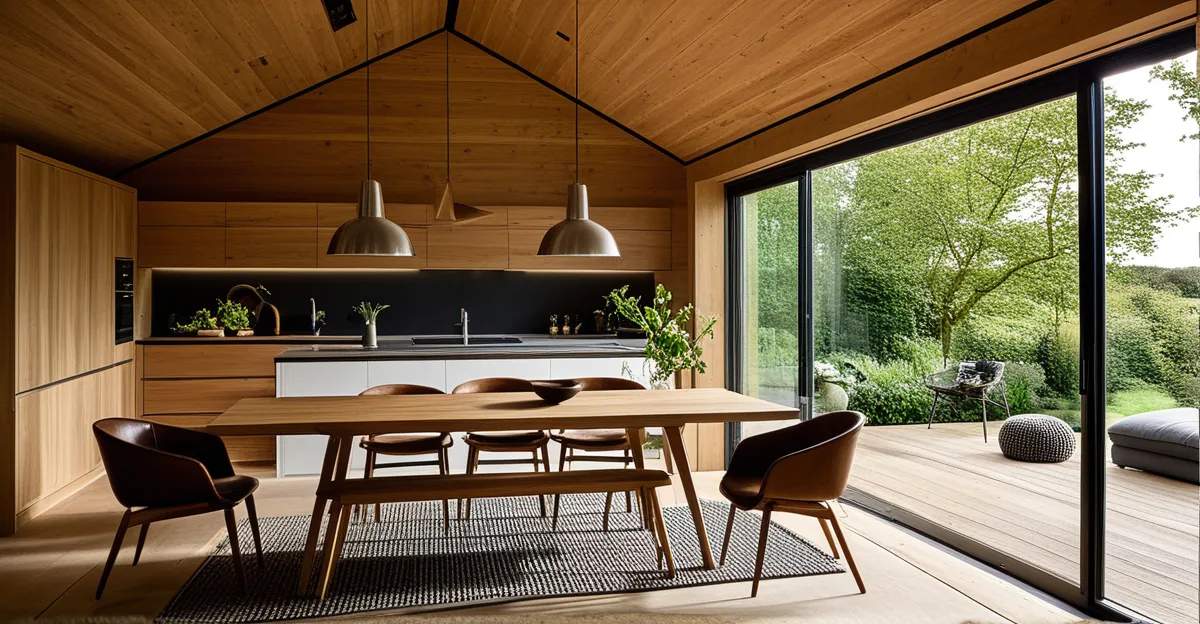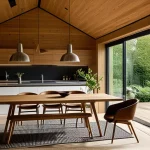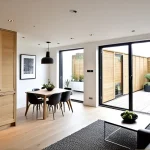The Role of Sustainable Design in UK Home Décor
Sustainable design in UK home décor focuses on creating living spaces that minimize environmental impact while promoting eco-friendly interior design principles. It integrates materials and practices that reduce waste, conserve energy, and encourage responsible resource use. This approach is highly relevant to UK living spaces, where increasing environmental awareness drives demand for greener choices.
Key principles shaping sustainable design include using renewable or recycled materials, optimizing natural light, and selecting low-impact finishes. These actions reflect a broader shift toward energy efficiency and resource conservation in home décor. For example, homes prioritizing sustainable design often feature furniture made from reclaimed wood or fabrics produced with fewer chemicals, emphasizing durability and end-of-life recyclability.
Have you seen this : What Changes Can You Make at Home to Enhance Comfort?
Consumer values in the UK have evolved significantly, with more homeowners seeking options that align with their environmental priorities. This shift manifests in ecologically conscious interior design, from choosing plants to improve air quality to adopting minimalist décor that reduces consumption. Sustainable design in UK homes not only fulfills aesthetic desires but supports a meaningful reduction in ecological footprints, creating spaces that are both beautiful and responsible.
Eco-Friendly Materials and Practices in Interior Design
Sustainable practices in green interiors UK largely focus on choosing eco-friendly materials that reduce environmental impact without sacrificing style. Reclaimed wood is a standout option, offering durability while diverting waste from landfills. Similarly, recycled metals are valued for their strength and renewability, making them essential choices in furniture frames and decorative accents. Low-VOC paints and finishes are crucial too, as they improve indoor air quality by reducing harmful emissions.
Also to read : How Can Modern Design Transform Small UK Living Spaces?
Homeowners increasingly adopt energy-efficient lighting, such as LED bulbs, which significantly cut electricity use while providing versatile lighting options. Water-saving fixtures, including low-flow taps and dual-flush toilets, complement these efforts by conserving water in everyday routines, directly supporting sustainable practices.
Ethical sourcing is another consideration shaping eco-conscious interiors. Transparent supply chains ensure that materials are responsibly harvested, supporting both environmental and social goals. For UK home décor, this means prioritizing suppliers who adhere to sustainability standards and minimise carbon footprints.
Together, these materials and practices build a foundation for interiors that are not only beautiful but align with the growing shift toward a greener lifestyle in the UK. Each choice in eco-friendly materials reinforces the larger commitment to sustainable design, from reclaimed wood furniture to energy-saving appliances.
Current Trends Influenced by Sustainable Design
Sustainable décor trends in the UK increasingly embrace biophilic design, which connects interiors to nature through the use of plants, natural light, and organic textures. This approach not only beautifies spaces but also enhances wellbeing by creating calming environments that mimic the outdoors. UK home trends now often feature abundant greenery as a central design element, reflecting a growing desire for nature-inspired interiors.
Upcycling and vintage reuse are gaining appeal as practical sustainable design strategies. Repurposing furniture or decorative items reduces waste while preserving character and history within homes. This aligns with eco-friendly interior design goals by extending product life cycles and promoting creativity in decorating.
Multifunctional and modular furniture also rises in popularity, especially in urban UK homes where space is limited. These pieces blend style with practicality, supporting sustainable living by maximizing utility and reducing the need for excessive furniture purchases.
Together, these trends illustrate how sustainable décor evolves to meet environmental concerns and lifestyle needs. By integrating natural elements, valuing reuse, and prioritizing versatile furnishings, UK home décor reflects a dynamic shift toward greener, more mindful interior design.
Environmental and Lifestyle Benefits of Sustainable Home Décor
Sustainable living UK thrives by reducing carbon footprints through mindful interior choices. Selecting eco-friendly materials and sustainable practices decreases resource consumption, effectively lowering emissions associated with production and disposal. This aligns with broader environmental goals, helping UK homeowners contribute positively to climate action.
Beyond environmental impact, sustainable home décor creates healthier indoor environments. Using non-toxic, low-VOC paints and responsibly sourced materials improves air quality, reducing allergens and harmful chemicals. This benefits occupants’ wellbeing by promoting cleaner, fresher spaces—essential for families or those with sensitivities.
Supporting local UK artisans and sustainable businesses strengthens community economies and encourages ethical supply chains. Purchasing from these sources means investments remain within the UK, fostering craftsmanship tied to sustainable design values. It also ensures transparency and accountability in material sourcing.
In summary, sustainable home décor offers dual advantages: environmental benefits through energy and resource conservation, alongside lifestyle improvements via healthier living spaces. UK residents increasingly recognize this connection, motivating shifts toward greener, more mindful interior design that supports both planet and personal health.
UK Initiatives and Regulations Supporting Sustainability in Home Décor
UK sustainability initiatives actively shape the landscape of eco-friendly interior design, encouraging widespread adoption of sustainable practices. Key policies, such as the Building Regulations, set mandatory standards for energy efficiency and environmental impact in residential construction and refurbishment. These regulations help ensure that new UK homes meet minimum sustainability criteria, influencing choices in insulation, lighting, and material use within UK home décor.
The BREEAM certification further supports greener building and interior design by providing a robust framework to assess sustainability performance. Achieving BREEAM recognition signals compliance with high environmental standards, encouraging designers and homeowners to prioritize eco-conscious decisions. This initiative directly impacts the selection of eco-friendly materials, aiding consumers in identifying products that align with environmental goals.
Eco-certifications in the UK, including FSC (Forest Stewardship Council) and the Ethical Trade Initiative, offer trustworthy labels that verify responsible sourcing and ethical production. These certifications are essential for homeowners seeking transparency and assurance in sustainable design. Together, UK sustainability initiatives, regulations, and certifications create a reliable infrastructure that promotes sustainable design values while empowering homeowners to make informed choices aligned with greener living.







